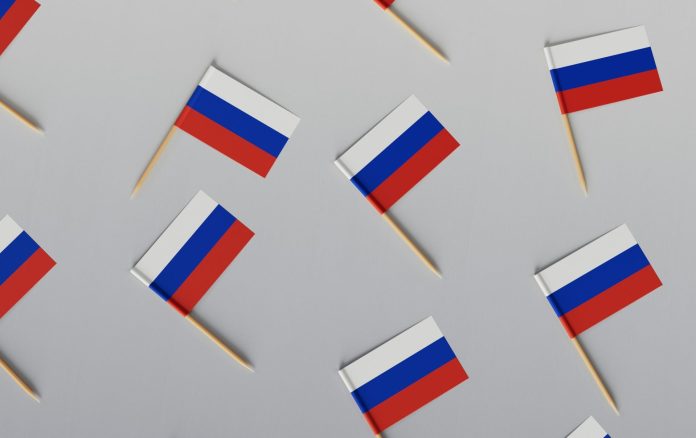When Western countries imposed what US officials called “the largest set of sanctions and export controls ever imposed on a major economy” following Russia’s invasion of Ukraine, many analysts predicted economic paralysis for Moscow. However, Russia has demonstrated remarkable adaptability, developing sanctions-proof supply chains that have kept its economy—and war machine—running despite unprecedented restrictions. This raises the fundamental question: are Russian sanctions working as intended?
The Shadow Fleet Phenomenon
One of the most successful circumvention strategies has been Russia’s creation of a “shadow fleet” of oil tankers. According to Al Jazeera, Russia acquired a fleet of second-hand tankers at prices higher than scrap metal value, establishing a transportation network outside Western control.
The Kyiv School of Economics estimates there are at least 187 shadow tankers carrying Russian crude and petroleum products. These vessels, operating without Western insurance or ownership, have effectively neutralized the G7’s price cap on Russian oil, allowing Moscow to continue earning substantial revenue from energy exports.
As Bloomberg reported, Russia’s current account surplus grew to $16.6 billion in the third quarter of 2023, showing that foreign trade remained robust despite sanctions.
The Rise of Parallel Imports
Russia has institutionalized a system of “parallel imports” that allows goods to enter the country despite EU sanctions Russia imposed early in the conflict. In December 2023, Russian officials claimed that parallel imports amounted to over $70 billion worth of goods over the previous two years.
This system works by having Russian companies import Western goods through third countries not participating in sanctions. These intermediaries purchase products from Western manufacturers and then resell them to Russian buyers, often at a markup.
An analysis by the Institute of International Finance revealed dramatic increases in exports from Western countries to Central Asian republics and the Caucasus, which serve as conduits for goods ultimately destined for Russia. For example, German exports to Kyrgyzstan reportedly increased 55-fold over two years following the invasion.
China’s Crucial Role in Russian Sanctions Evasion
China has emerged as Russia’s most important economic partner in circumventing Western sanctions. According to Asia Nikkei, trade between Russia and China rose by nearly 30% to exceed $200 billion in the first 11 months of 2023, with Chinese exports to Russia surging by 50%.
Chinese companies have filled critical supply gaps in the Russian economy, particularly in technology. When sanctions cut off access to Western gas turbines from Baker Hughes for Russia’s Arctic LNG 2 project, Novatek swiftly pivoted to Chinese supplier Harbin Guanghan, as reported by The Arctic Institute.
Reuters reported that about half of Russia’s oil and petroleum exports in 2023 went to China, with 40% going to India, effectively replacing lost Western markets.
Domestic Production and Import Substitution
Sanctions have inadvertently stimulated Russia’s domestic manufacturing sector. As Monde Diplomatique reports, the automotive sector has grown by 19%, overcoming the shock of sanctions and benefiting from the withdrawal of Western automakers in 2022.
Russia’s defense industry has shown particular resilience. According to CEPA, Russia has managed to maintain weapons production despite export controls, producing more artillery shells than all Western countries combined.
Since 2014, Russia has implemented an import substitution policy that achieved food self-sufficiency in just a few years, according to Responsible Statecraft. This preparation helped buffer the impact of 2022 sanctions on consumer goods.
Financial Infrastructure That Bypasses Western Control
Russia has built alternative financial systems that have proven crucial during sanctions. The National Payment Card System (NSPK) launched in 2015 immediately took over when Visa and MasterCard suspended operations in Russia, as reported by The Atlantic Council.
Similarly, Russia developed a domestic financial messaging system (SPFS) that replaced SWIFT for Russian banks excluded from the international system. According to Politico, Moscow has also pushed trading partners to conduct transactions in national currencies rather than dollars.
Strategic Partnerships Beyond China
Russia has diversified its economic partnerships beyond just China. Al Jazeera reports that Russian-Indian bilateral trade doubled to over $50 billion between January and October 2023.
Turkey has also emerged as a significant partner, with Turkish banks continuing to process Russian payments despite Western pressure. Similarly, the United Arab Emirates has become an important hub for Russian business, particularly in the gold trade, which The Conversation identifies as a crucial element in Russia’s sanctions-evasion strategy.
Implications for Future International Sanctions Regimes
Russia’s success in creating international sanctions-proof supply chains challenges the effectiveness of economic warfare in an increasingly multipolar world. The Russian experience suggests that determined states with sufficient resources and international partners can significantly mitigate the impact of even the most comprehensive sanctions.
This has profound implications for Western policy. As The New Yorker notes, sanctions generate meaningful change only about forty percent of the time, and Russia’s case demonstrates that economic coercion may be losing effectiveness in a world where alternative economic networks can quickly emerge.
The paradox of sanctions is that they may accelerate the very developments they aim to prevent—in this case, the creation of economic systems that operate beyond Western control and ultimately reduce Western leverage in global affairs.



 Bitcoin
Bitcoin  Ethereum
Ethereum  Tether
Tether  XRP
XRP  Solana
Solana  USDC
USDC  Cardano
Cardano  TRON
TRON  Lido Staked Ether
Lido Staked Ether  Avalanche
Avalanche  Toncoin
Toncoin